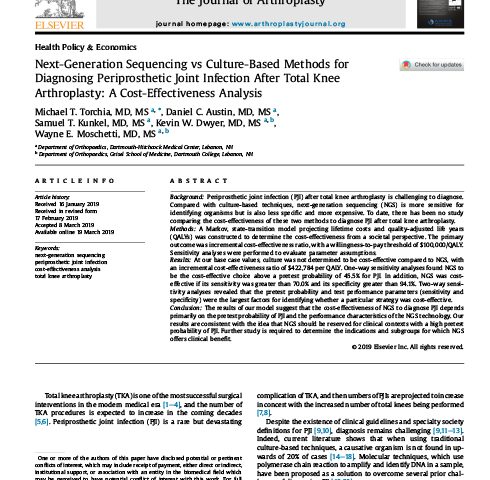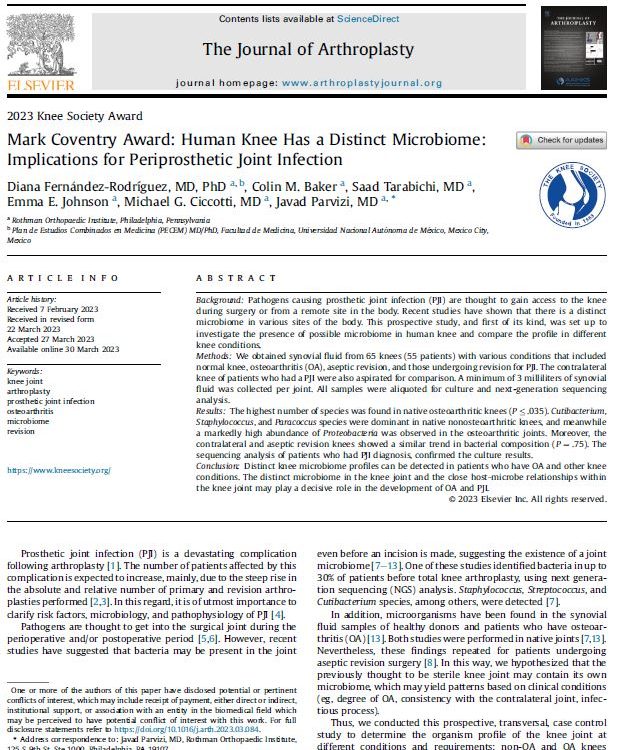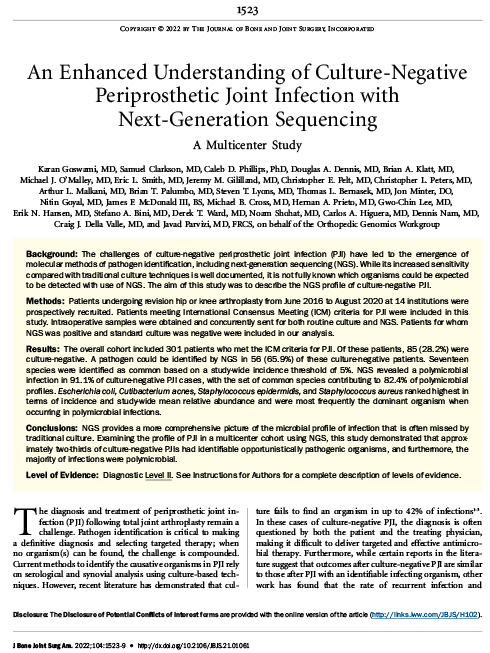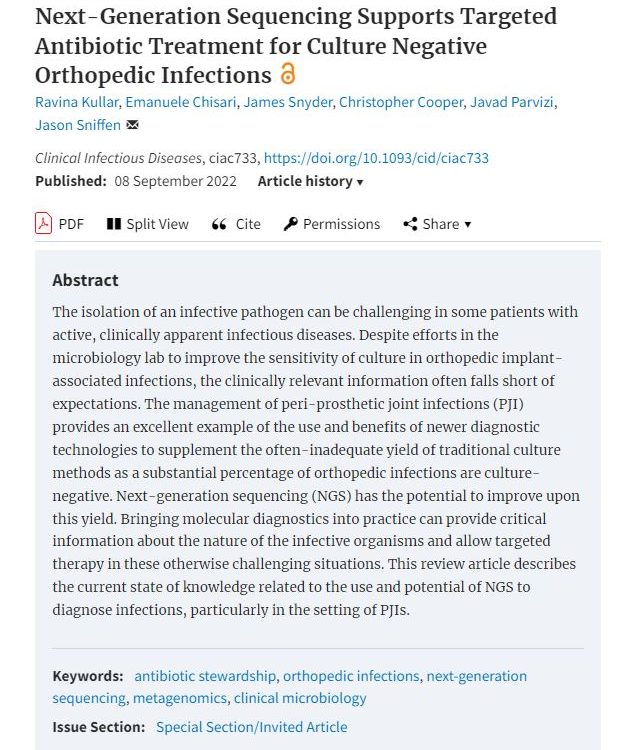J Arthroplasty. 2019;34(7):1333-1341.
Study: A comparison was made between culture-based techniques and next-generation sequencing (NGS) relating to cost-effectiveness in diagnosing periprosthetic joint infection (PJI) after total knee arthroplasty. NGS is more sensitive than culture-based techniques for identifying microorganisms but is less specific and more expensive. A Markov, state-transition model projecting lifetime costs and quality-adjusted life years (QALYs) was constructed to determine the cost-effectiveness from a societal perspective. The primary outcome was incremental cost-effectiveness ratio, with a willingness-to-pay threshold of $100,000/QALY. Culture was not cost-effective compared to NGS, with an incremental cost-effectiveness ratio of $422,784 per QALY. One-way sensitivity analyses found NGS to be the cost-effective choice above a pretest probability of 45.5% for PJI. The results suggest that NGS should be reserved for clinical contexts with a high pretest probability of PJI. Read Study



